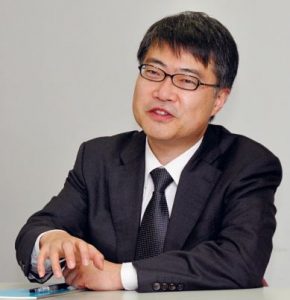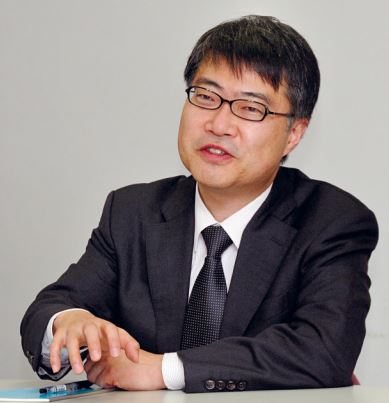This post is also available in: Japanese
What makes a researcher successful in creating skin-like wearable devices?
Dr. Takao Someya, Tokyo Univ.
At one time, it was generally thought that semiconductor devices had to be made on a hard silicon substrate. Then, in the 2000s, researchers started exploring flexible electronic devices, although most of the research focused on display devices. In this environment, in 2004, Prof. Takao Someya (who specializes in electrical engineering at the University of Tokyo’s Graduate School of Engineering) developed artificial skin (“E-skin”) for use on robots. More recently, he has earned acclaim by successfully developing an ultra-light nanomesh sensor that causes no inflammation even when it is left attached to human skin for a week. We interviewed Professor Someya for this article.
*This article was released in “PR Magazine No.68 published in June, 2018”.
An exceptional math teacher in junior high helped me decide to pursue a career in
math and science
――What was your childhood like?
Someya:Two things stood out. The first was having a truly excellent math teacher in junior high school. Thanks to him, I fell in love with math. The second was the fact that my father was an engineering researcher. I was strongly influenced by him from an early age.
So I chose to study math and science. After entering the university, I was again fortunate to have many wonderful teachers, who guided me in finding a path as a researcher.
――What are your hobbies?

Professor, Department of Electrical Engineering,
School of Engineering, The University of Tokyo
Someya:In junior high school, I joined the astronomy club. We observed and photographed the stars and planets at night and developed the photos the next day. Photography is still my hobby. For nearly 10 years after my research lab got started, I took most of the photos destined for external publication. Some of these were featured on the covers or in the opening articles of well-known magazines, including TIME.
In senior high school, I was a member of a chorus club. I sang bass, and I continued to sing in university. Although I like classical music best, I also developed an interest in jazz after coming into contact with it while studying in the U.S.
Studying in the U.S. inspired an interest in organic
electronics
――What led you to become involved in your current research?
Someya:In university, I chose engineering because it is a field that can be directly useful to people. I became interested in semiconductors, which were said to be Japan’s key industry, and I decided to major in electronic
engineering. I studied at a research lab where nanostructures of inorganic compound semiconductors – one type of semiconductors that are microfabricated – were created. The physical properties of the electrons sealed inside them were also examined.
My supervisor at the time was Prof. Hiroyuki Sakaki, who has been active in many fields and has made distinguished contributions. It was also in that lab that I encountered ULVAC equipment. After graduation, I began to do research on the optical and engineering properties of nanotechnology in the lab of Prof. Yasuhiko Arakawa.
Although it did not lead directly to my current area of interest, it was so-called mainstream research, focusing on semiconductor miniaturization.
The trend toward miniaturization was approaching its physical limits, and yet I had just begun research and had more than thirty years to go before I would reach retirement age at 65! So I began to think about taking on a subject in a new, slightly different field that had never before been tackled.
In 2001, I received a scholarship to study for about two years at Bell Laboratories in the U.S. That is where I learned about a research project in which organic semiconductors were being applied to transistors.
This was my encounter with organic electronics.

